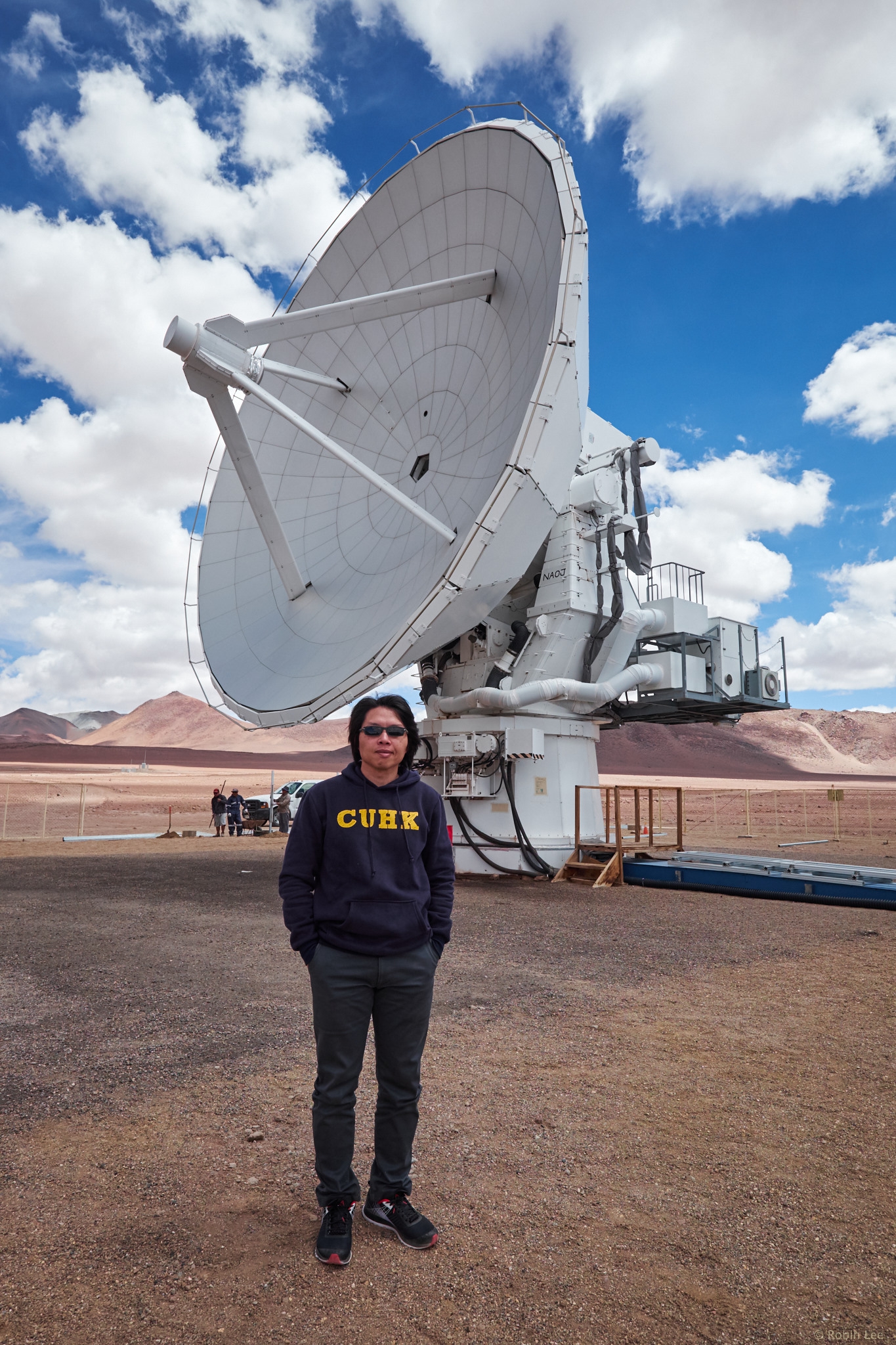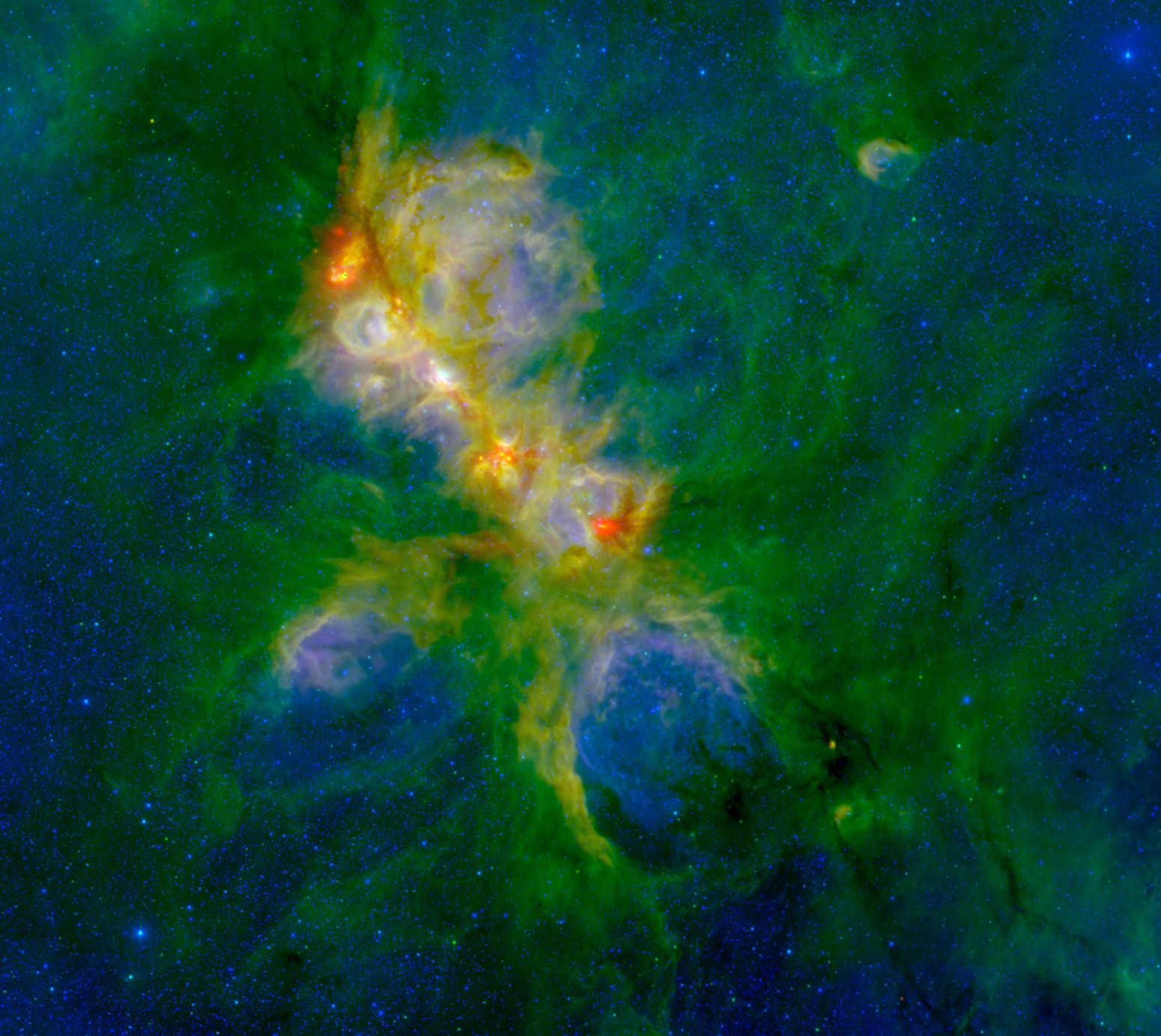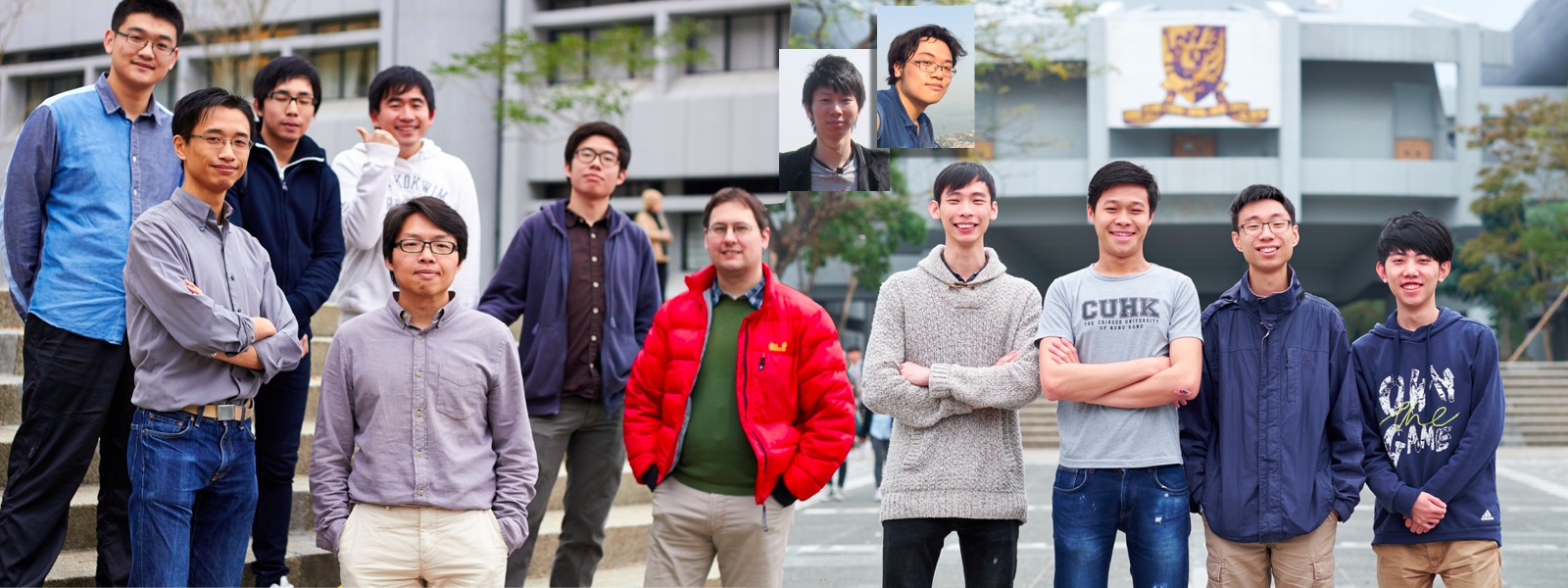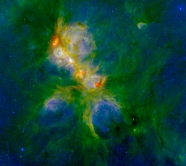CUHK
News Centre
CUHK Physicist Unveils Mystery of Massive Star Formation
Prof. Hua-bai Li, Assistant Professor, Department of Physics, The Chinese University of Hong Kong, and his collaborators, have recently revealed a surprising picture that magnetic fields is a crucial force in regulating the conversion of clouds to stars. The groundbreaking findings have been published recently in Nature. The conclusion is based on data collected from a massive star forming site for almost a decade.
‘We ourselves are made of stardust’, said astrophysicist Carl Sagan, since almost every single atom besides hydrogen in the human body was forged in the heart of some stellar furnace. A great triumph of 20th century astronomy is to explain the life of a star, from infancy (the beginning of the main sequence) to death (e.g., white dwarfs, neutron stars, black holes), but the details of its birth is still largely unknown. A research group led by Professor Li aims to answer questions related to stellar birth.
Shedding light on a long debated question
The formation of massive stars (those that have so much mass that they will eventually die as neutron stars or black holes) is especially mysterious, largely because they are more distant and thus harder to observe. The German philosopher Immanuel Kant had suggested in 1755 that ‘Stars form from the gravitational collapse of large clouds of gas’ (Allgemeine Naturgeschichte und Theorie des Himmels). Indeed, 200 years later, young stars were indeed found embedded within giant molecular clouds, which are composed mainly of H2 gas and can be as massive as one million times of the Sun. Massive stars (with more than 10 times the mass of the Sun) usually form in clusters, but less than 10% of the molecular cloud is converted into stars. Apparently, some force has to regulate the self-gravity and thus limit the conversion of clouds to stars and to shape the distribution of stellar masses. It has been long debated whether magnetic fields (B-fields) are strong enough to be a possible regulation force, but a direct measurement of the field strength in clouds is extremely difficult.
At a distance of about 5,500 light years from us in the constellation Scorpius, NGC 6334 (also known as the Cat’s Paw Nebula) is the nearest massive star forming site. Prof. Hua-bai Li and his collaborators have been collecting data from this source for almost a decade. They focused on mapping B-field morphologies in the NGC 6334 region at multiple scales (0.05–500 light year) and with various gas densities (1–106 H2 per cubic cm). This has allowed them to study the process from cloud formation, cloud fragmentation to cloud core (stellar wombs) formation.
The crucial role of magnetic field in stellar formation
Professor Li said, ‘We found that the B-field direction of NGC 6334 is quite well preserved from large to small scales, implying that self-gravity and cloud turbulence are not able to significantly alter the field direction. As a result, the cloud and fragmentations at various levels are all flattened along the B-field (because contraction in the perpendicular direction is limited by the Lorentz force) and field lines are slightly pinched by the fragmentations at various scales.’ In other words, the B-field is dynamically important in determining process of cloud formation, cloud fragmentation and cloud core formation, contradicting the mainstream assumption that turbulence is the single major protagonist regulating star formation.’.
‘The fact that the multiple scales studied here are all from a single cloud makes it particularly interesting.’ said Dr. TK Sridharan, a co-author from Harvard-Smithsonian Center for Astrophysics, ‘We are able to trace both the orientations and the pinched field morphologies and their relations to the locations of the fragments on nested spatial scales spanning a factor of 1000 in one region.’ ‘Huge efforts and strong faith eventually make such a synoptic image with extremely high spatial dynamic range possible.’ said Dr. Hauyu Liu, another co-author from the Academia Sinica Institute of Astronomy and Astrophysics.
While a direct measurement of cloud field strength is extremely difficult, Professor Li and his team have developed a novel way to estimate the B-field strength. ‘Since the gas contraction is highly anisotropic’, said Mr. Ka Ho Yuen, a first-year graduate student of CUHK and a winner of C N Yang Scholarship, ‘the gravitational and magnetic forces must be close to being balanced in the direction perpendicular to the mean field.’ Another team member, Dr. Frank Otto, has successfully validated the assumption using numerical simulations. How field strength varies with cloud density is an important indication of the dynamical importance of the field. The result from the team, for the first time, shows that B ∝ ρ0.41±0.04 within a massive star forming cloud and that result further agrees with the picture that cloud contraction/fragmentation is channeled by B-fields.
‘Since theoretical simulations often ignore magnetic fields, the fact that this paper shows that magnetic fields are important for channeling collapse at almost all scales is a very important result,’ according to the Nature referee report.
A full version of the paper can be found at:
http://www.nature.com/nature/journal/vaop/ncurrent/full/nature14291.html

Prof. Hua-bai Li from CUHK Physics Department and his collaborators have recently revealed a surprising picture about the formation of massive stars.





